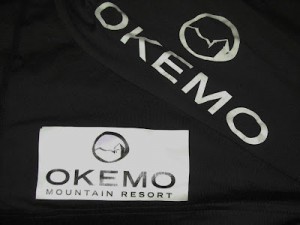What is Dye Sublimation?
Most polyester fabrics, such as many of the popular “Performance Garments”, are dyed using a sublimation process. The dye sublimation process uses high heat to permanently fuse the colorant into a polyester fabric.
Heat serves two critical functions in this dying process. First, the heat causes the pores of the polyester fabric to open up, so the material can accept the dye. And second, the heat converts the solid ink dye on a transfer sheet into a gas.
Under pressure of the heat press, the gaseous dye is forced into the open pores of the polyester. As the temperature drops, the pores close up capturing the dye inside of the bonds to the substrate.
The sublimated color is very durable because the dye becomes an integral part of the fabric, rather than a colorant on the outside of the fibers of the fabric, which can bleed and fade. Sublimated fabrics can be washed again and again,
without losing the vibrancy of its color.
Dye Migration Can Discolor Heat Transfer Appliques
There’s one slight catch, though. When you heat press an applique onto a sublimated garment, the high heat can release the dye in the fabric. These dyes can then migrate and discolor an applique.

Without an anti-migration blocking layer, dye migration can discolor an applique. In the photo above the white polyurethane film turned a light grey within 72 hours of heat pressing.
Discoloration resulting from dye migration does not occur immediately. Instead it is a gradual process, which may take as long as 72 hours to occur. For example, a white applique heat pressed onto a black sublimated garment is likely to turn grey over time.
Heat Transfer Films with an Anti-Migration Layer
To prevent discoloration, many of our RTape heat transfer films incorporate our SubliBlock (SBB) blocking layer. These products incorporate a second layer of film, which blocks dye migration. While this second layer adds to the thickness of the applique, it is much more effective in preventing discoloration compared to other products, which utilize adhesive additives to perform the blocking function.
RTape heat transfer films, which incorporate SubliBlock include:
- FlexCut Sticky SubliBlock, a polyurethane film for plotter cutting.
- Tatoo SubliBlock, a digitally printable polyurethane film.
- FiberPlus SubliBlock, a polyester flock film for dye sublimation printing.


